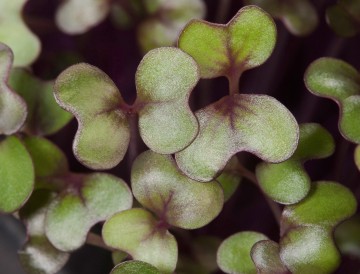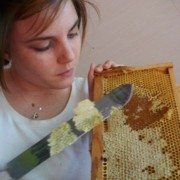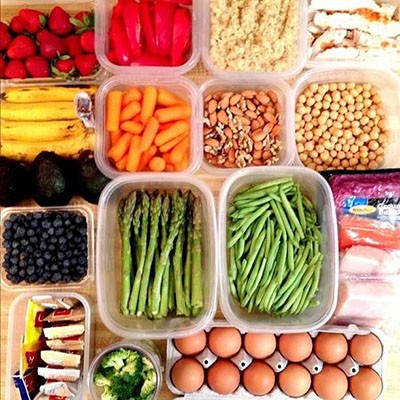Microgreens: Grow Your Own Multi-Vitamins
Saturday, October 31, 2015

Red cabbage microgreens; via wikimedia commons
Grow
Why pay $6.99 for a tiny bag when growing your own is cheaper and more fun? All you need to start are some organic vegetable seed packets, a shallow planting container, some organic potting mix and a spray bottle. Since it’s now fall, you might be able to score deals on clearance seed sales. If you like the vegetable fully grown, chances are you will love the tender but punchy flavor of its infant form. Kale, arugula, beets, chard, cabbage, and broccoli all sprout easily. Pea shoots with their delicate tendrils are a delight in January. If you find success with your ol’ standbys, be bold and try new varieties, like bok choy, radishes, amaranth or mustard greens. Micro crops of herbs like cilantro, basil and chives make cute countertop companions and lend delicious flavor bumps to dishes.
For containers, seed trays work well. Alternatively, reuse a clear plastic salad mix box with a few holes cut in the bottom for drainage. Ceramic pots are aesthetically pleasing, but require more soil to fill the pot than with a shallow tray. Whatever container you select, make sure you have a water catchment tray underneath. Baking sheets or lasagna pans work great.
Soak the seeds overnight to speed up germination. Fill the tray with potting mix then sprinkle the seeds so they are about 1 cm apart. Don’t worry too much about spacing, since they will grow crammed together just fine! Cover the seeds with a 1/8 inch of soil and spritz the tray until it is saturated. Label the tray with the variety and the date. Place the tray in the most well-lit window of your home, say a little prayer to the fertility gods and then wait. When the seedlings start to come up, keep spritzing the soil a little bit every day.
Harvest
Harvest the greens with scissors when the babies are 1-2 inches tall and have at least 2-4 seed leaves. Once snipped, the plants will likely send up new shoots several times. If you have kids, let them sprout their own tray of greens. Picky eaters are much more likely to eat greens that they have grown themselves.
Sprinkle microgreens on top of salads and sandwiches. Pack in Vietnamese summer rolls with rice noodles, mint and chopped peanuts, or garnish hearty winter soups with baby rainbow chard and cilantro. Once you start microgreen growing, it is impossible not to marvel at the miraculous stamina and determination of baby plants. Their beguiling color and fresh taste is the vitamin-packed cherry on top of your salad. Happy sprouting.

Related Slideshow: 5 Ways to Maintain a Healthy Brain
A new survey by AARP shows that while 93 percent of individuals recognize the importance of brain health, few people actually know how maintain a healthy brain.
Do you know how?
Here are 5 ways to keep your brain in tip top shape.
Related Articles
- Rules for Eating Healthy On a Budget
- Survey Finds Few People Know How to Maintain a Healthy Brain
- Ten Tips For A Healthy Thanksgiving Day
- Is Detoxing Actually Healthy for You?
- How Should the Portland Timbers Use a Healthy Diego Valeri?
- Animal Shelter Struggles With ‘Unhealthy and Untreatable’ Pets
- Eat This, Not That: Healthy Thanksgiving Food Swaps
- Four Steps to Creating a Healthy Lifestyle
- 6 Make-Ahead Healthy Breakfasts to Start the School Day Right














 Delivered Free Every
Delivered Free Every
Follow us on Pinterest Google + Facebook Twitter See It Read It